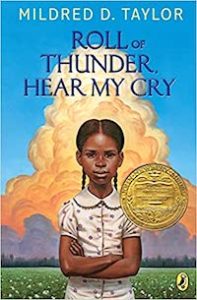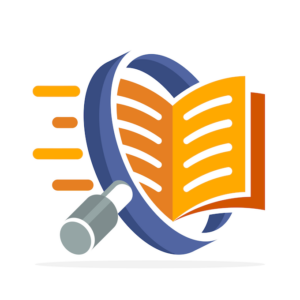Using Lenses to Develop Close Reading Skills
By Katie Durkin
 Some of the best professional development I’ve ever received has been learning from other teachers in my school. I have had the opportunity to visit classrooms and see teachers honing their craft. And I’ve enjoyed collaborating with colleagues during team meetings.
Some of the best professional development I’ve ever received has been learning from other teachers in my school. I have had the opportunity to visit classrooms and see teachers honing their craft. And I’ve enjoyed collaborating with colleagues during team meetings.
But what I personally have found most valuable has been when our district set aside time during a professional development day for teachers to present ideas they’d been trying in their classrooms. It was during one of these opportunities that I first learned about using “lenses” to help students strengthen their reading skills.
My colleague’s innovation
Last year, my school planned a whole day where teachers were presenting innovative lessons and ideas to their colleagues. By leveraging the intellectual capital in the building, our school was showcasing some of the amazing work many educators were doing.
I attended a session with an 8th grade Social Studies teacher who presented the work she had been doing with her students on sharpening their academic reading skills.
Because her curriculum centered on American History, she was helping students to view what they read through specific lenses, meaning they had to analyze what they were learning about American history by reading texts with a specific focus in mind.
These lenses represented motifs students could look for and recognize in their reading: humanity, justice, resistance, power, and agency.
The Social Studies teacher gave multiple examples of how she introduced the lenses to students and coached them on how to read a text with the lenses forefront in their thinking. Then she demonstrated to us how she modeled this work for her students.
Because they were studying the American Revolution at the time and were using a class text to learn about the topic, she displayed on a document camera how students were annotating using the five lenses as they read.
Bringing innovations to seventh grade
This professional development intrigued me, and I knew that I wanted to bring similar work back to our 7th grade teachers and students. I approached a Social Studies teacher on my team who agreed we could make this work for our students. We decided to meet with all of the 7th grade English Language Arts and Social Studies teachers to see how we could incorporate this lens strategy into our curricula.
We decided that we wanted to use a subset of the 8th grade lenses that best matched our own curriculum. In 7th grade we focus on world geography in Social Studies and on historical fiction in English Language Arts. After examining our individual curricula, we chose three of the five from 8th grade: justice, resistance, and power. We also discussed other potential motifs and eventually decided to add two new lenses: resilience and community.
Making launch plans
During our joint teams meeting we also discussed how to launch this work with our students and incorporate it into our daily lessons. Because our planning session happened before our school’s Winter Break in December 2022, we decided to launch this work in January.

We planned to create bulletin boards in our common team areas displaying the five lenses we would use in our classrooms, and we also wanted to launch this work by having students practice with a different type of text.
We decided to have the students learn about “reading” through lenses by having them view Disney Pixar’s A Bug’s Life. Because many teachers had seen this film and knew it addressed elements of justice, resistance, power, community and resilience, we thought this would be a great way to help students think about how we view texts through various lenses.
During a whole team meeting with students, we introduced what a lens is, how it relates to close reading, and the five lenses we would be using in 7th grade. We had the students work in small groups to define our five lenses and to provide examples of them.
We found that we needed to discuss resilience and justice in more depth with the students more as their work did not show they understood these terms. Once we felt students had a good grasp on the terms, we watched A Bug’s Life, stopping at strategic parts in the movie to let students take notes on one of the five lenses and to have discussions as a group.
Looking at the results of this student work, we decided it was time to have them try applying the lenses while reading a text.
Focusing on one lens per week
Using our whole class novel, Roll of Thunder, Hear My Cry, we decided to have students focus on one lens a week. We started with having the students examine power, and then resistance, justice, and resilience, and ending the novel with a close look at community. Each week, students were asked to reflect in small groups, discussing how they were seeing the lens of the week play out in the plot of the story and citing specific examples.
It worked! Students were excited when they recognized any of these lenses in the book and were able to discuss and write about the role these motifs played in the story, eventually demonstrating close reading skills by using direct quotes from the text to support their claims about the lenses.
This work continued throughout our historical fiction unit and into our social justice unit. Students also learned how to make connections between the fictional stories they were reading in my ELA class and the world geography they were learning in Social Studies.
Expanding beyond academics to team building
The teachers felt this work was so important for students that we decided to incorporate it into our classes again this year. What has been also great about our lens work in academic classes is we have been able to transfer this work into classroom team building.
For example, we noticed a lot of students were struggling to adhere to community agreements, so we were able to revisit the lens of community with our teams. We had strong conversations in small groups about how community helps students to think about the impact they have on our classroom and within our school. We are hoping students continue to make connections and transfer what they’ve learned about our five lenses into other areas of their lives.
My takeaways and how this might help you

I personally have also found it exciting that we were able to work on transfer of knowledge with the students, both in and out of their academic classes. Based on this experience, I think this is one good way to approach this often challenging aspect of teaching.
Think about the ways you could incorporate lens work into your own classroom. Could you collaborate with colleagues across disciplines or within your school to help students understand how lens work and how they can enhance their reading of just about any text? You might also see ways to “transfer” their work with texts to community building, media literacy and more.
I’m excited this year to repeat some of the successful ways we used lenses last year, and I’m equally excited to see where we might find other new and interesting applications for lenses and motifs!
Dr. Katie Durkin (@kmerz610) has been teaching middle school students for over a decade, and currently teaches English Language Arts at public Middlebrook School in Wilton, Connecticut, where she is the 7th Grade Team Leader.
Katie is a zealous reader of middle grade and young adult books and enjoys sharing her love and passion for reading with her students. In 2022 she earned her doctorate from Northeastern University, where her dissertation research examined the impact of classroom libraries on middle school students’ reading engagement.
Katie was the 2020 recipient of the Edwyna Wheadon Postgraduate Training Scholarship from the NCTE. She writes regularly for MiddleWeb and in early 2023 launched a podcast, That’s Novel Reading.

































